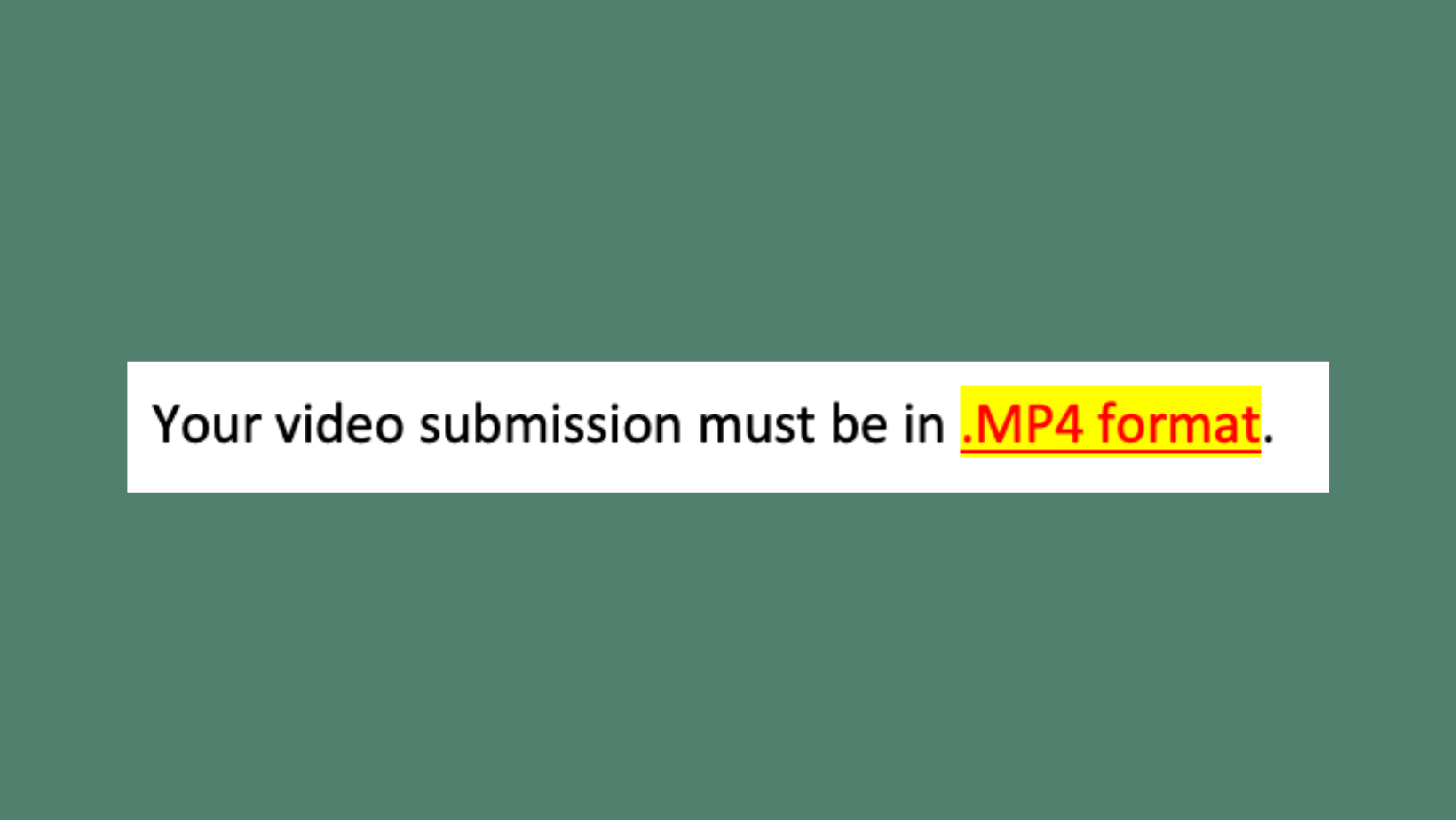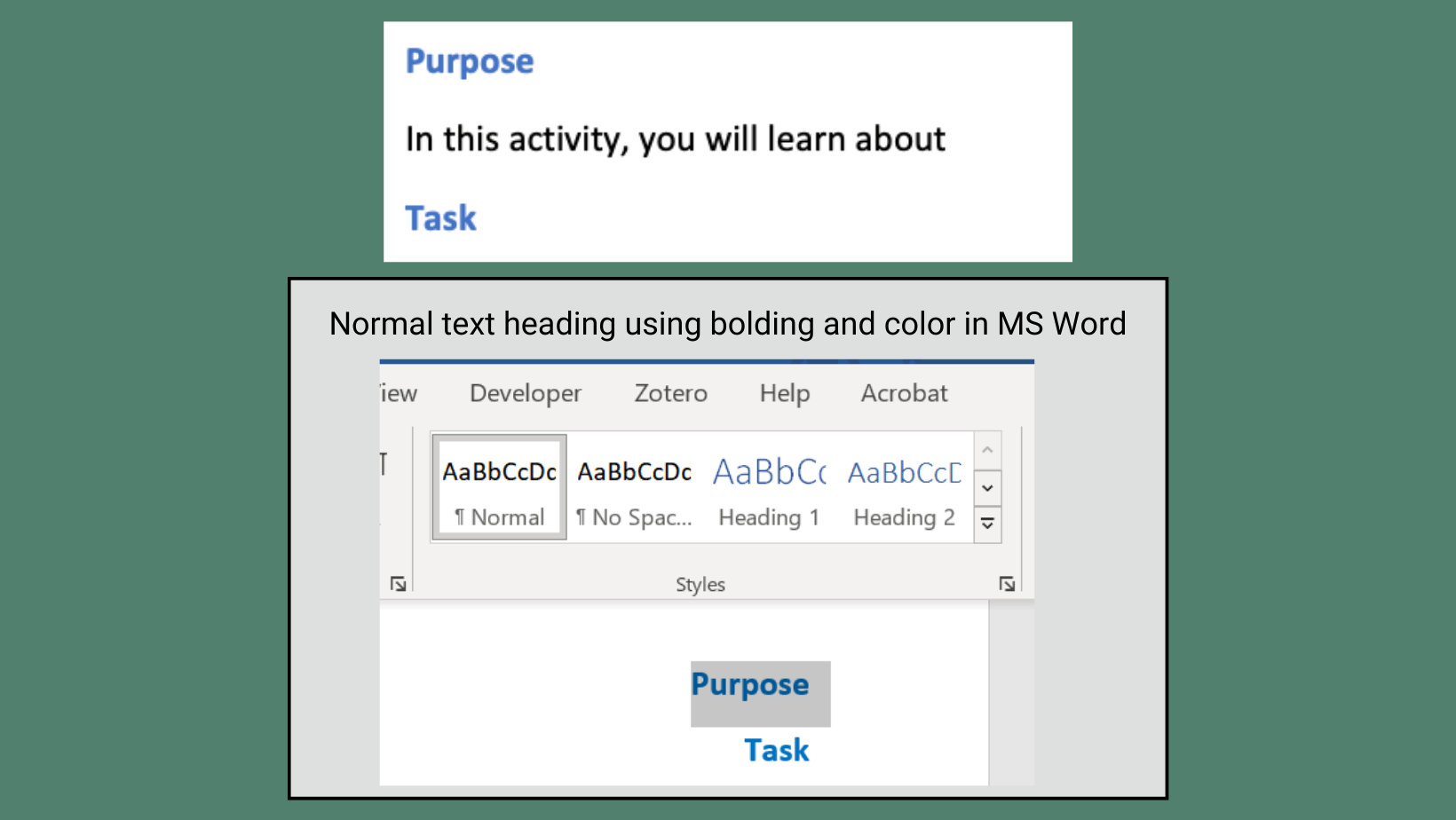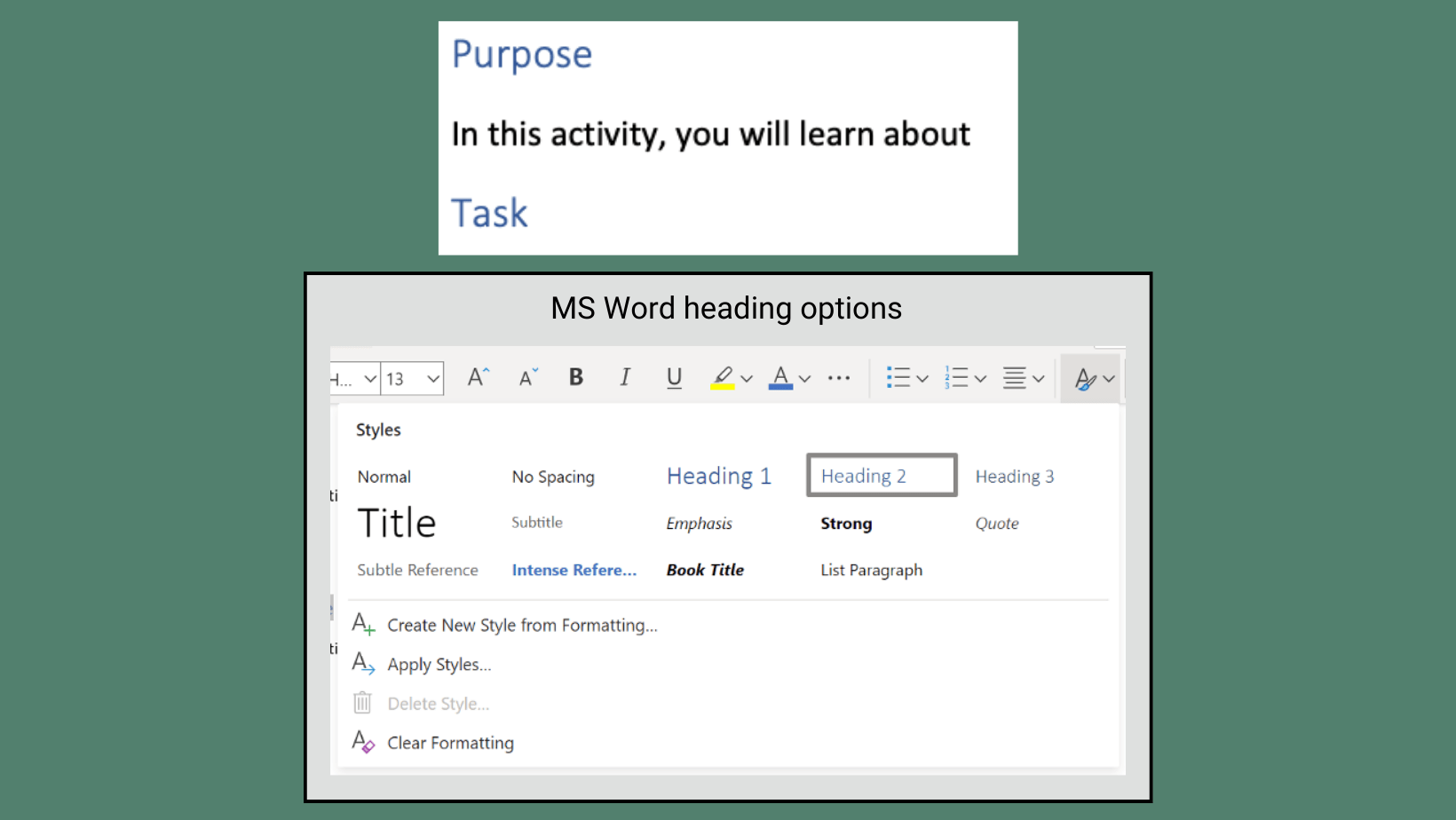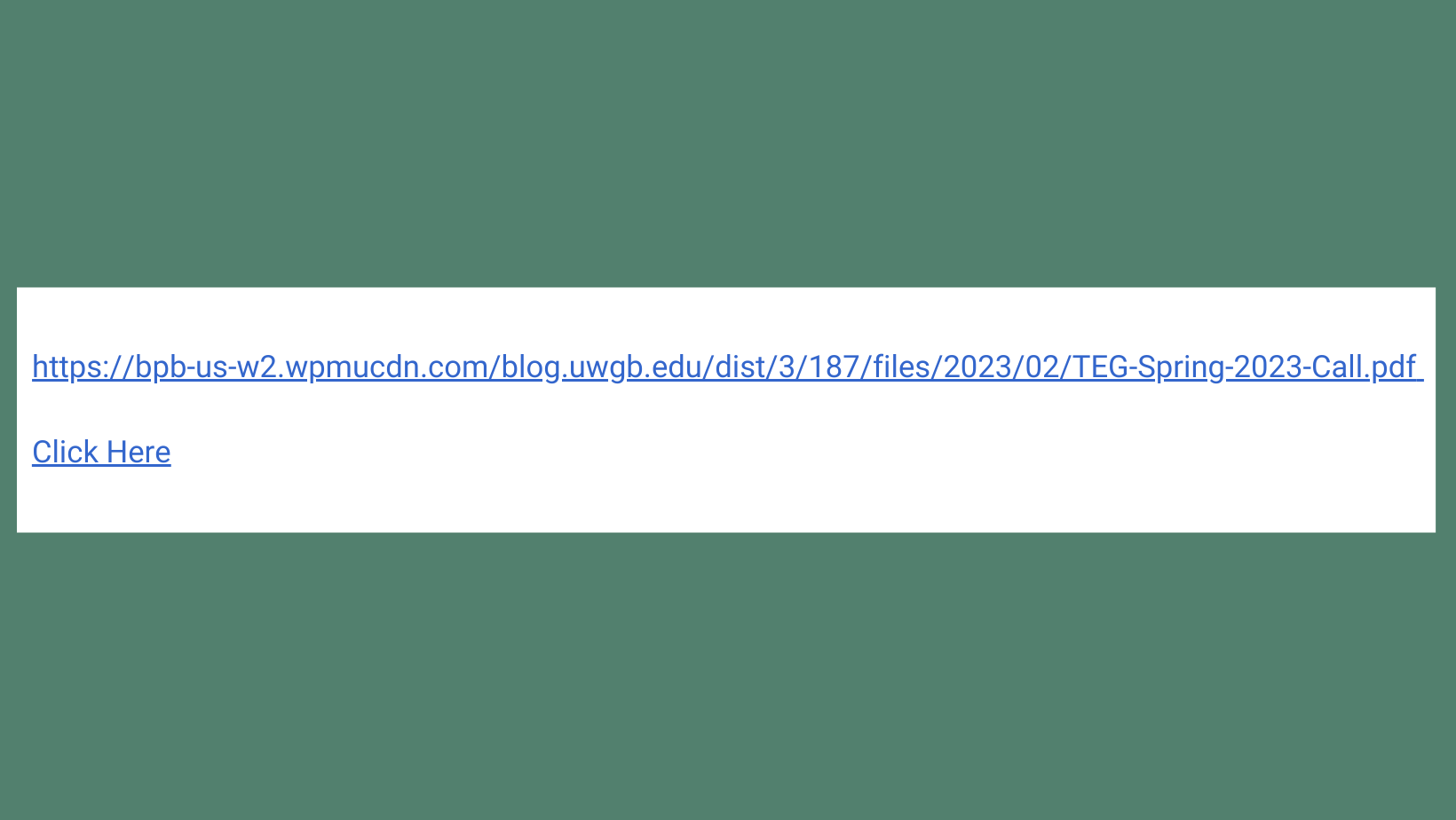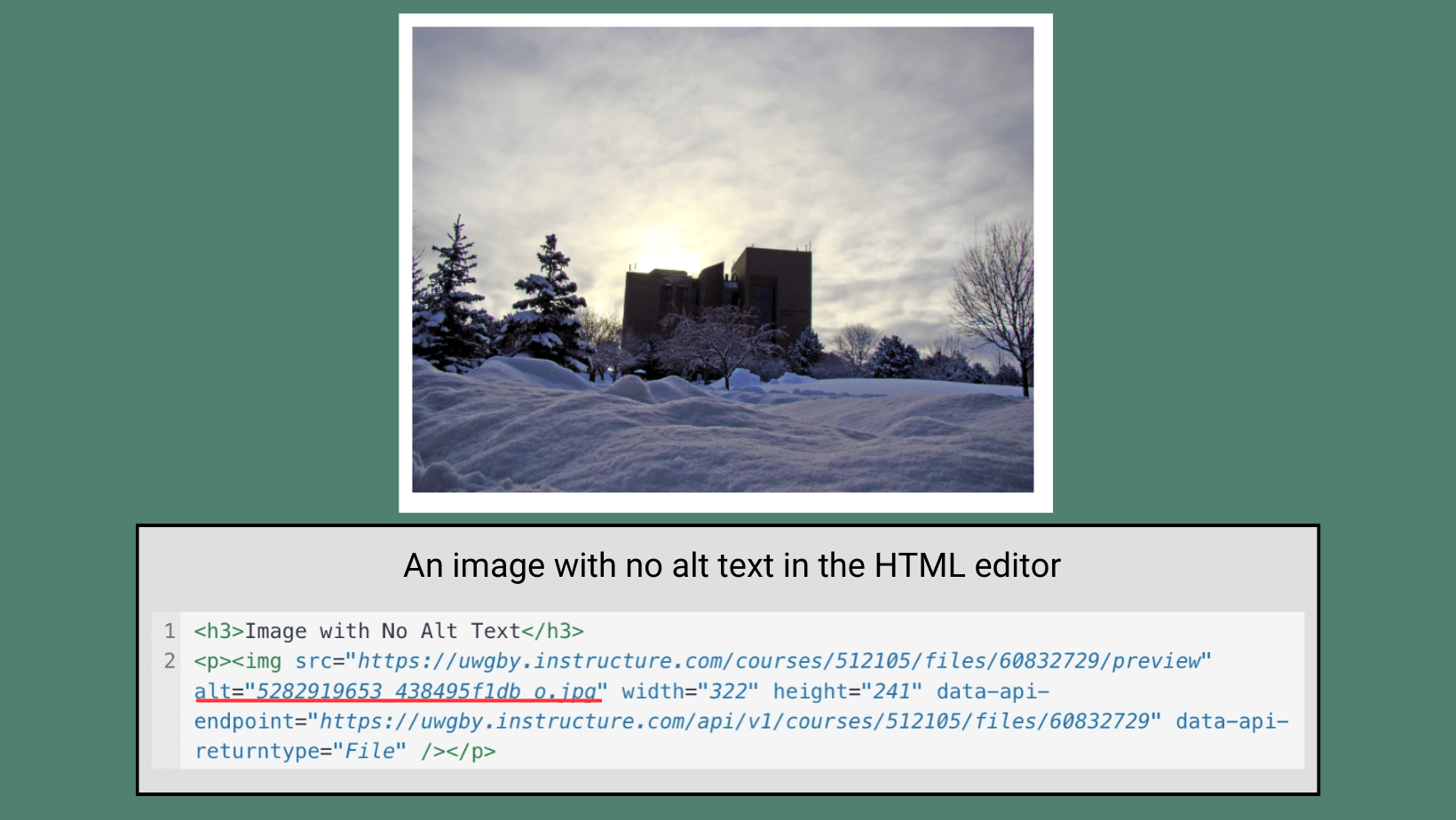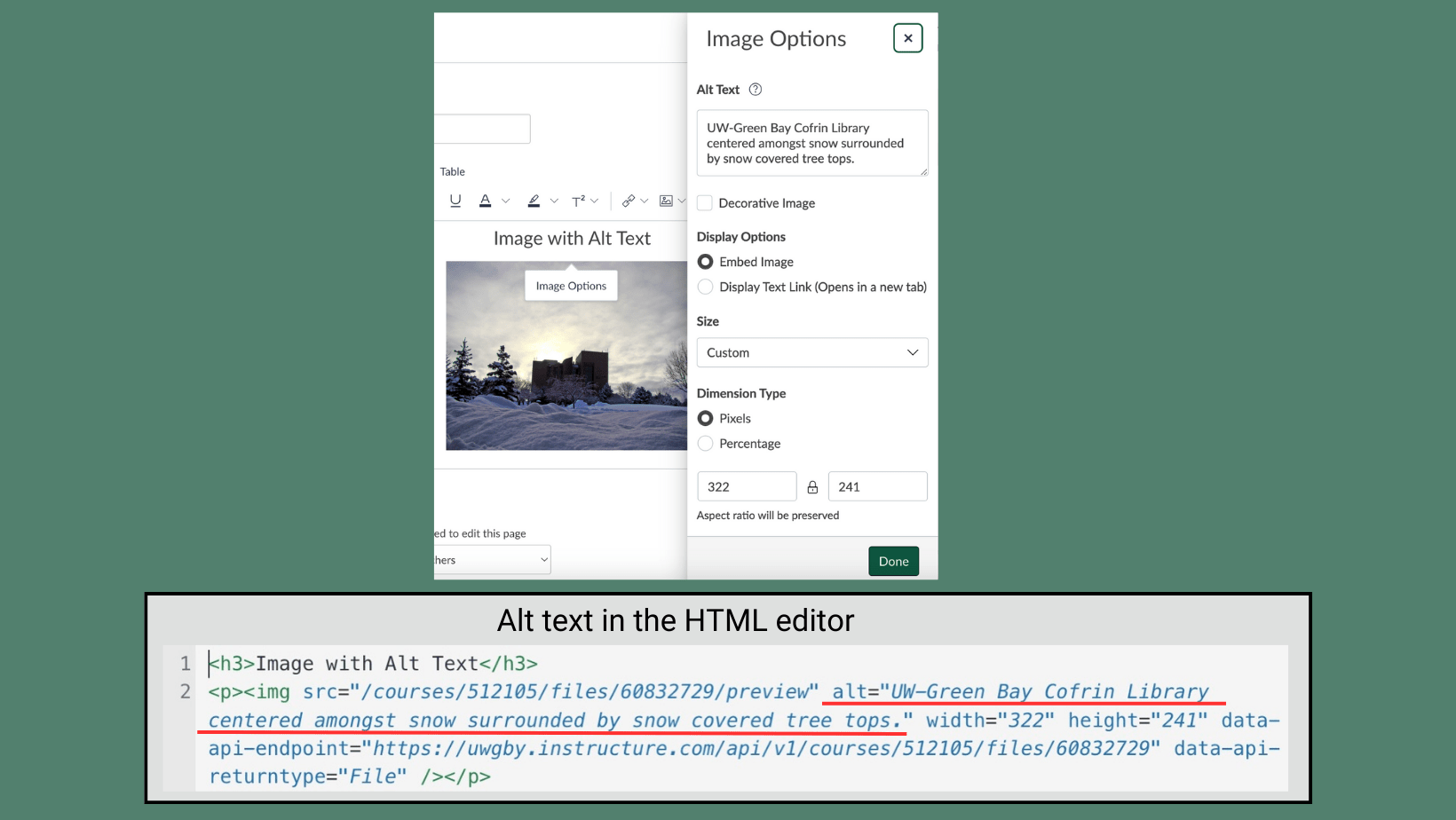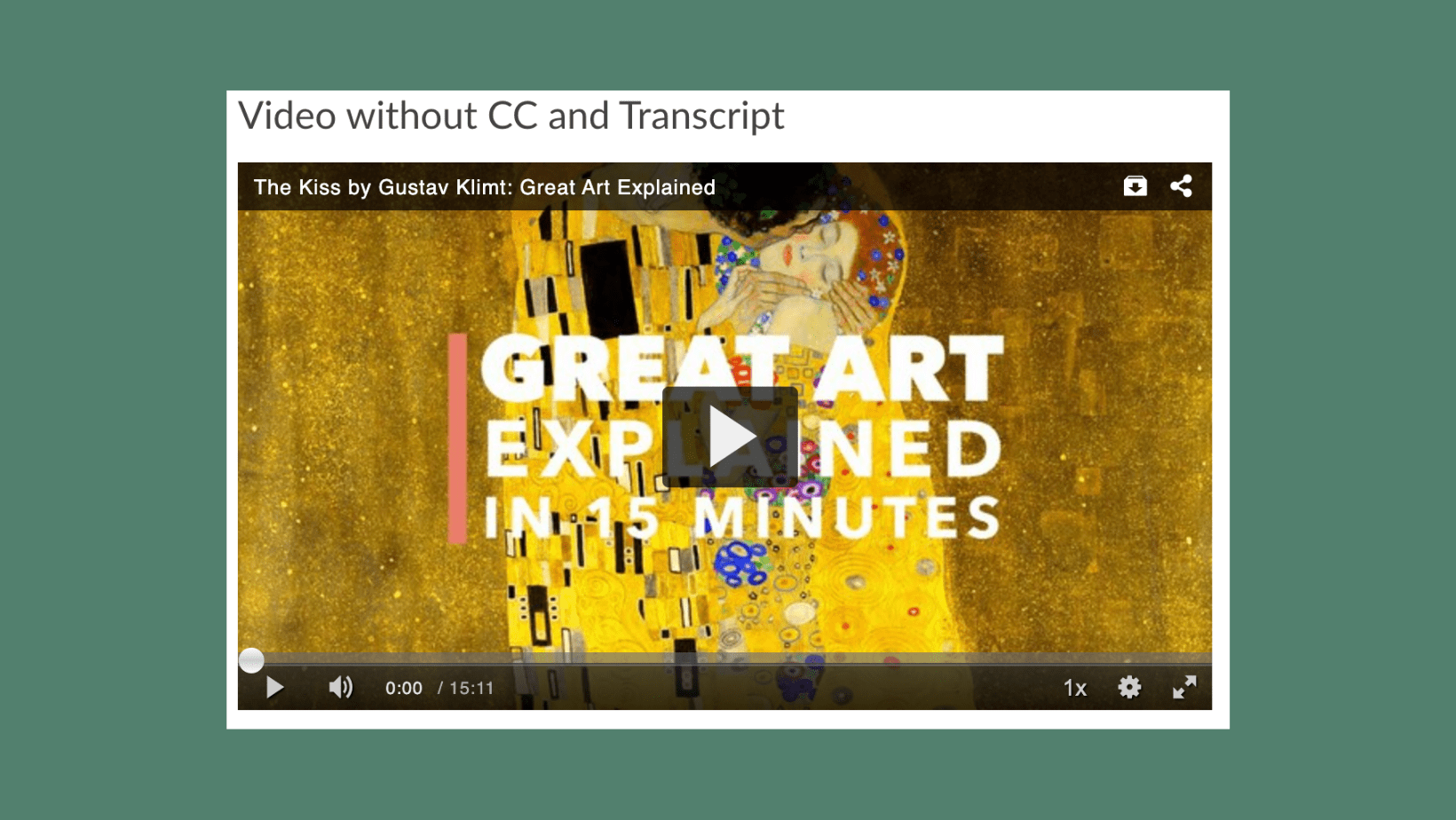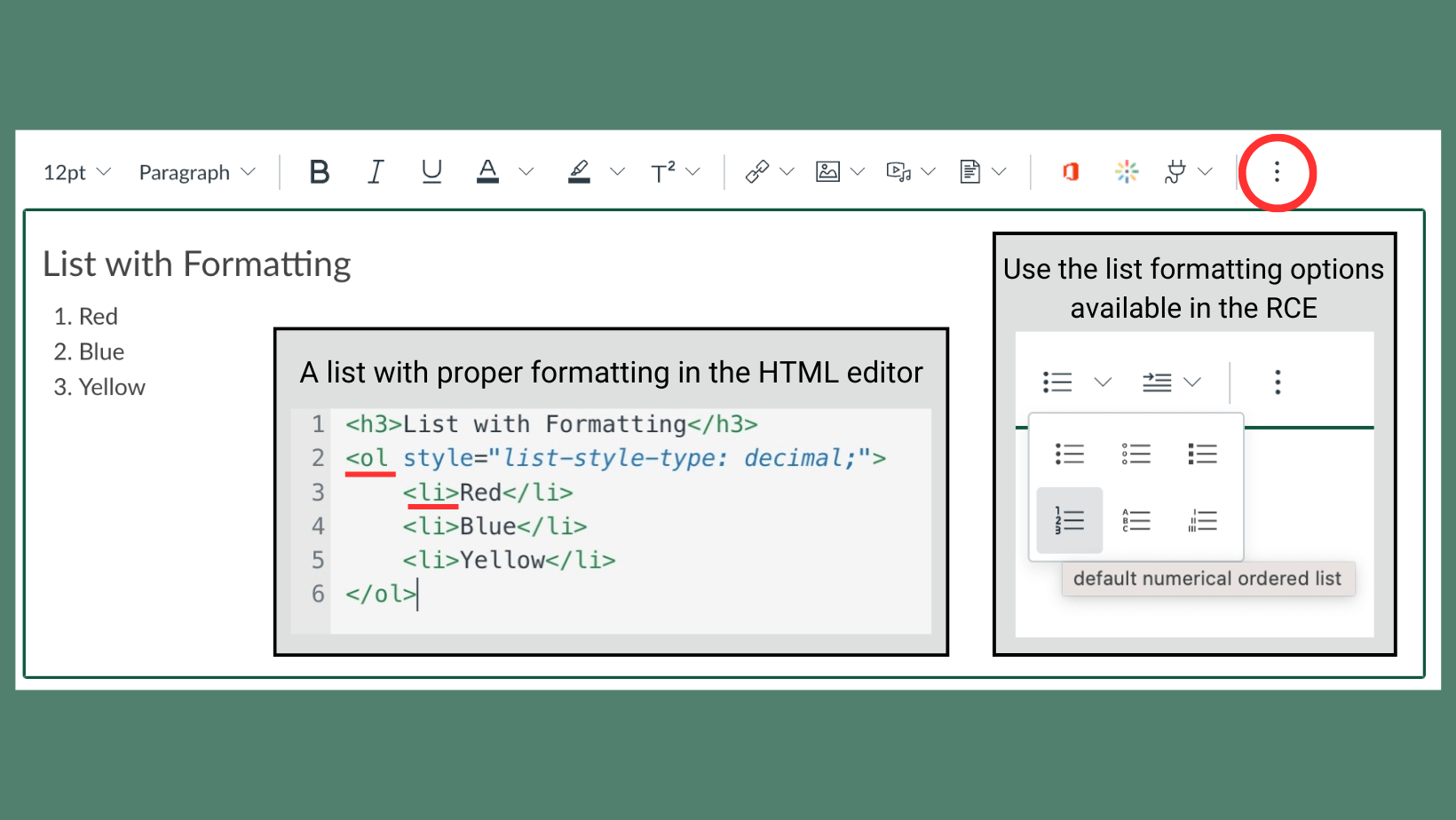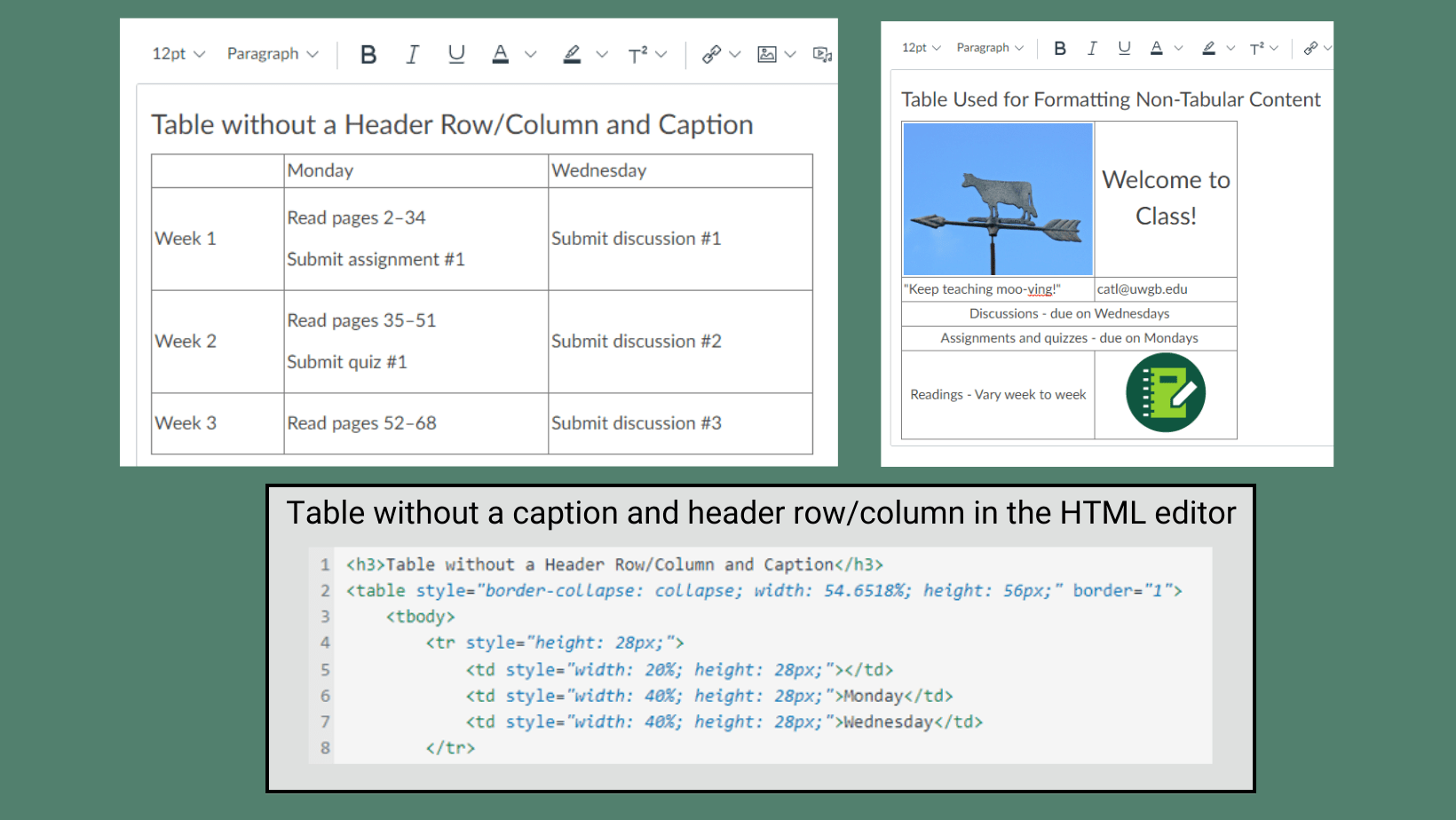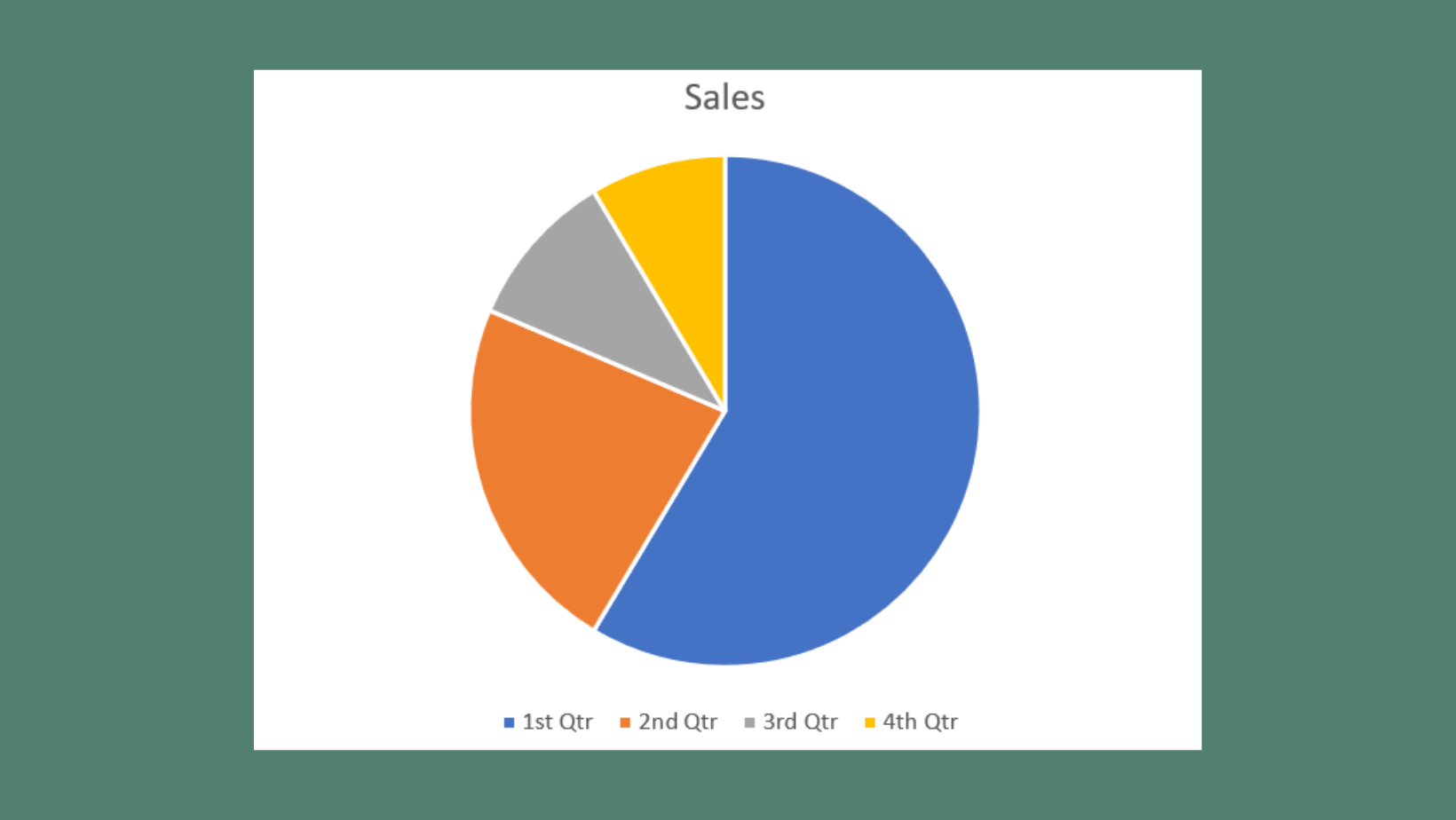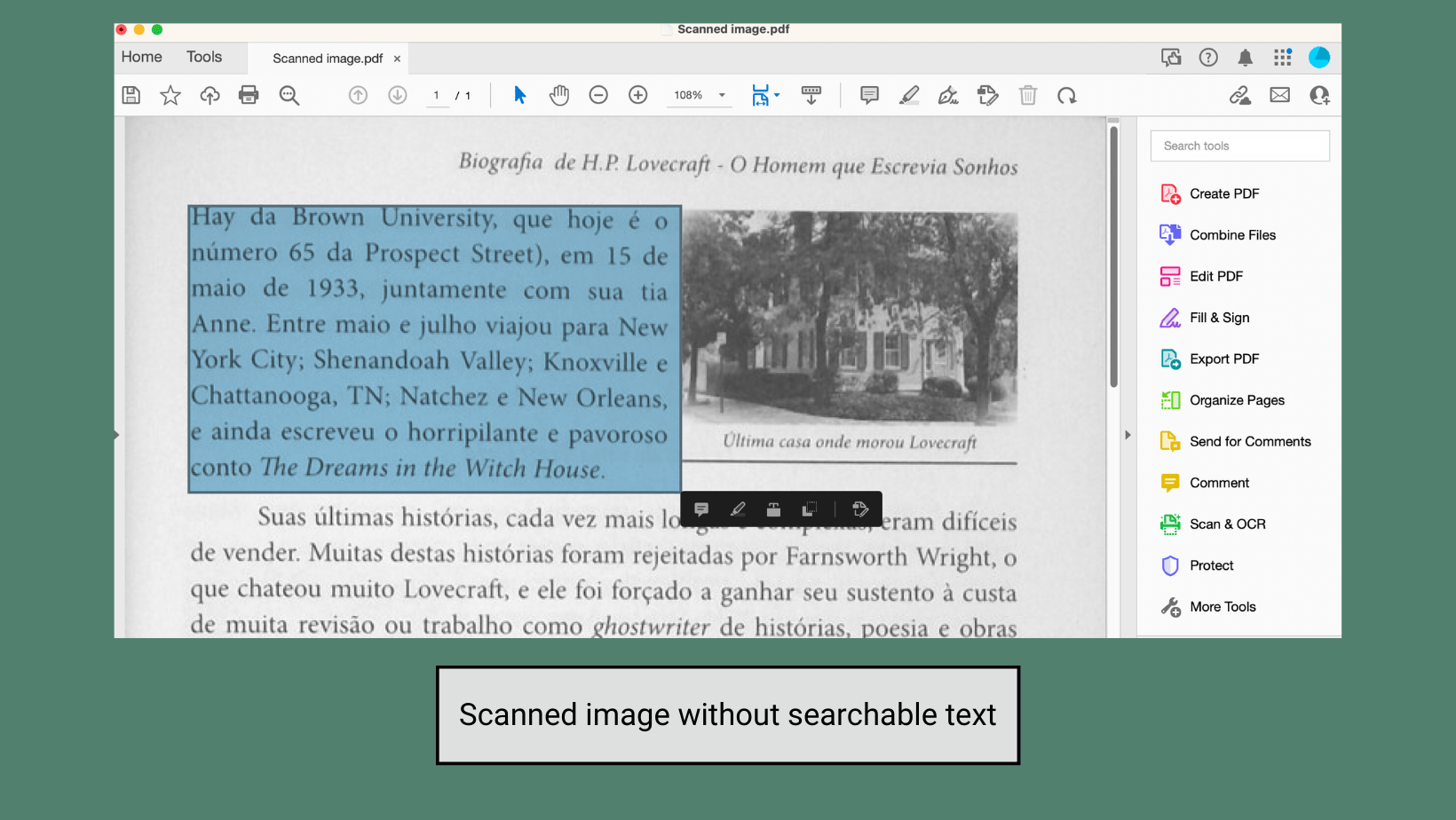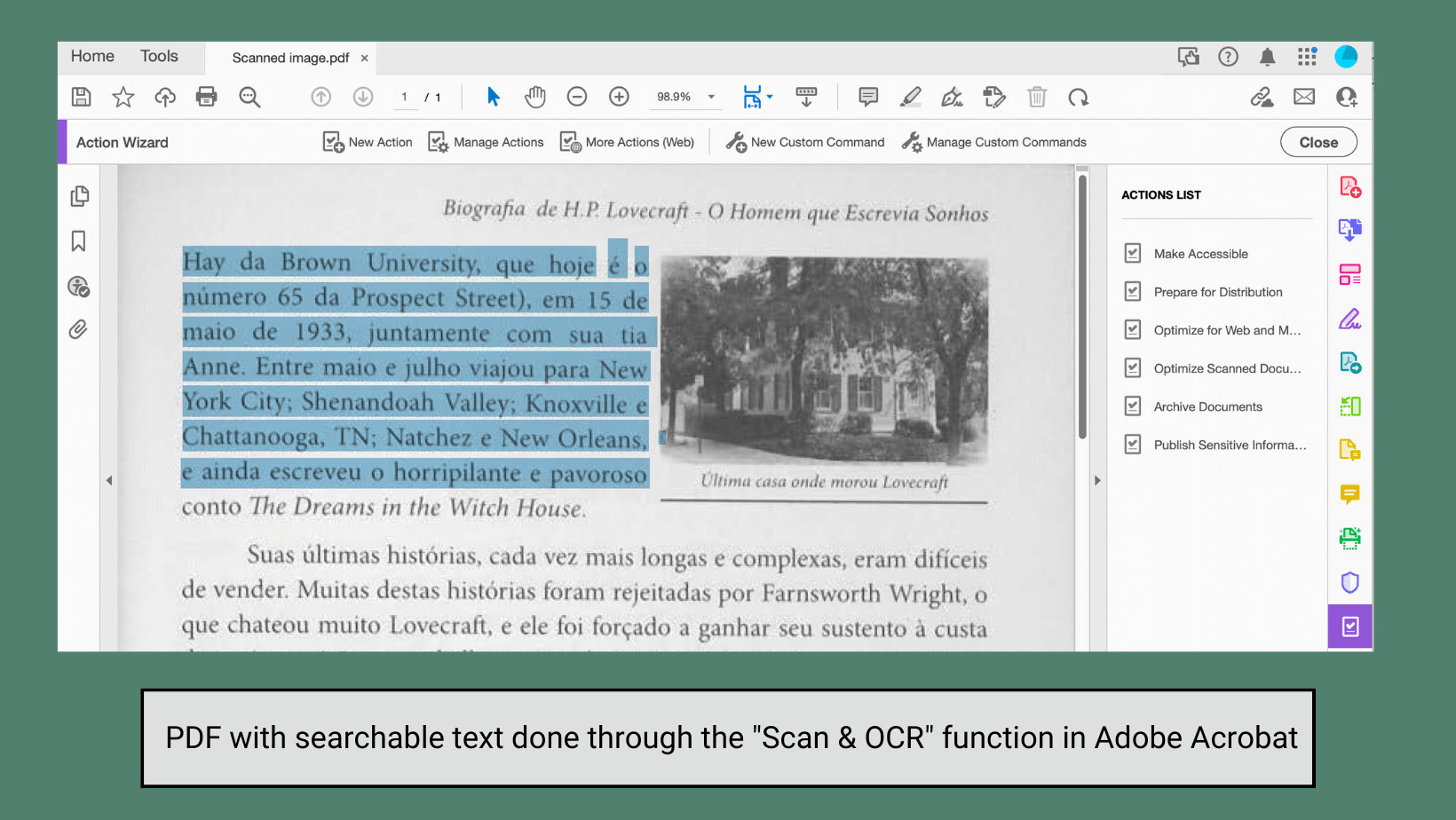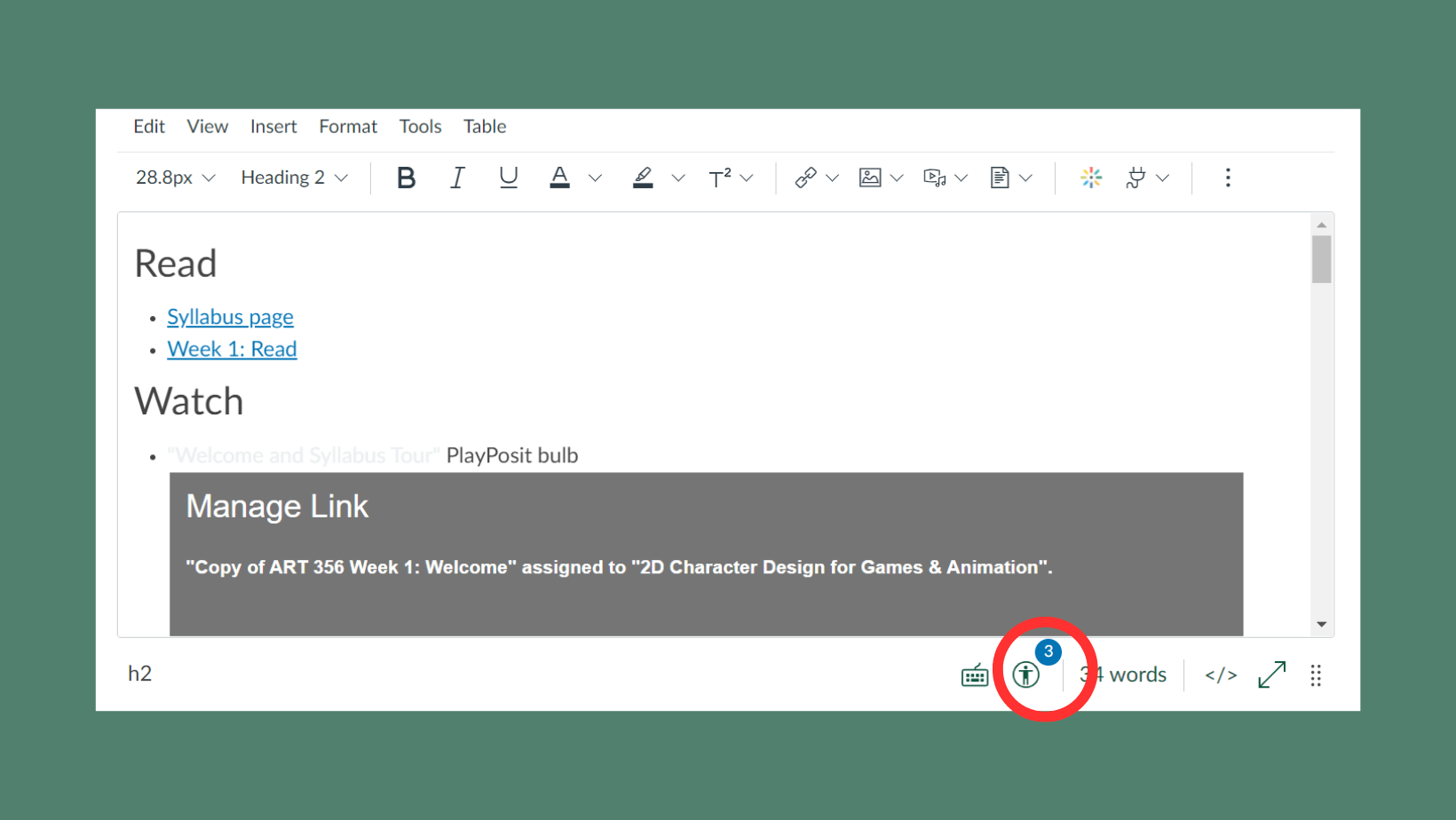Required Statements
Student Accessibility Services
Syllabi must include a statement that identifies the process for requesting academic accommodations for a disability. For more information see the Student Accessibility Services website.
The University of Wisconsin–Green Bay supports the right of all enrolled students to a full and equal educational opportunity. Reasonable accommodations for students with disabilities is a shared faculty and student responsibility. If you need any academic accommodation due to a disability, you must self-identify and register with the Student Accessibility Services (SAS) Office. To register, you will need to complete an online application (GB ACCESS) on the Student Accessibility Services website. GB ACCESS empowers you to request accommodations that would best support your learning in each class. Your request will be sent electronically to the SAS Office for review, approval and dissemination to faculty. Accommodations are not automatically available for each class, each term and do not go into effect until the request through GB ACCESS process is complete. Please contact the SAS office if you have any questions about the accommodation process or our role in supporting your learning. Once your request has been sent, the faculty, the SAS office and you can work together to ensure you have equal access. Location of SAS: Student Services Room 1700; phone: (920) 456-2841; email: sas@uwgb.edu and website.
The University of Wisconsin–Green Bay requires that students with disabilities are provided reasonable accommodations to ensure their equal access to course content. Qualified students with disabilities who will require accommodations in this class are encouraged to make their requests through the Student Accessibility Services Office and communicate with that office as soon as possible. Note: Prior to receiving accommodations, verification of eligibility from the Student Accessibility Services (SAS) is required. Disability information is confidential. Students can find the application for services on the SAS website or in the SAS Office, Student Services Building, room 1700.
In addition to any required full statement about Student Accessibility Services, Dr. Lisa Aspinwall of the Disability and Advocacy Research Network (DARN) suggests including a statement like the following in your syllabus.
“We are committed not only to the letter but also the spirit of the ADA. If you qualify for accommodations in any aspect of the course, we encourage you to use them, starting with the first class. Please see the professor as soon as possible so that we can work together to make arrangements.”
Academic Integrity
Syllabi must include a statement on academic integrity with a link to UW System’s Academic Integrity Policy (UWS Chapter 14). Consider also including explicit guidelines on the use of tools like generative AI (see the section on AI further below for examples).
Potential Online Learning Statements
Active Engagement
Instructors teaching in modalities that rely on online participation may wish to include a statement outlining expectations for student engagement.
Sample statement provided by Nichole LaGrow.
Although this is an online, asynchronous class, there are regular and frequent interactions in our class. A class week begins on a Wednesday at midnight and ends on a Tuesday at 11:59 pm. If a student is unable to engage with activity for an entire week, he/she should contact the instructor to discuss the absence. Extended absences should be processed through the Dean of Students.
Netiquette
Consider providing “netiquette” (net + etiquette) guidelines for students to maintain a more welcoming, comfortable, and effective environment for online communication.
"Netiquette" is the socially and professionally acceptable way to communicate on the Internet. Please abide by these guidelines of "netiquette" when using online communication tools with your classmates and instructor:
- Identify yourself. Begin messages with a greeting and close with your name.
- Avoid sarcasm. It can be misinterpreted causing hurt feelings.
- Keep the dialog collegial and professional. Some discussion topics may be controversial.
- Do not flame—these are outbursts of extreme emotion or opinion. Think twice before you submit a response. You cannot take it back!
- Do not use offensive language or profanity.
- Use clear subject lines for your posts.
- Do not use all caps. It is the online equivalent of YELLING!
- Avoid using abbreviations or acronyms—like UNESCO—unless the entire class knows them.
- Use emoticons (emotion icons) to clarify your emotions.
- Be forgiving. Anyone can make a mistake.
Communication in online courses is different than face-to-face conversation. To create a welcoming and open classroom environment, let's all practice "netiquette." There are ten simple guidelines you can follow to help us all have a better experience.
Online Proctoring
As outlined in UW-Green Bay’s Online Test Proctoring Policy, instructors should include a note about their intention to use online proctoring in SIS so students are aware before registering for the class. Instructors who elect to use online proctoring should also include a syllabus statement that alerts students to specific information regarding the proctoring tool and any associated class policies.
Honorlock will proctor your exams this semester. Honorlock is an online proctoring service that allows you to take your exam from the comfort of your home. You DO NOT need to create an account or schedule an appointment in advance. Honorlock is available 24/7, and all that is required is a desktop or laptop computer, a working webcam/microphone, your school or a government-issued ID, a stable internet connection, and Google Chrome’s Honorlock Chrome Extension.
Before you can take a proctored exam you will need Google Chrome installed on your computer and you will need to download the Honorlock Chrome Extension. You cannot take an Honorlock-proctored exam with a mobile device.
Several of the tests or exams for this class will use Honorlock. When a test or exam uses Honorlock, log into Canvas, go to your course, and click on the exam. Clicking "Launch Proctoring" will begin the Honorlock authentication process, where you will take a picture of yourself, show your ID, and complete a scan of your room. Honorlock will be recording your exam session through your webcam and microphone. During your exam, Honorlock will also record your screen. Honorlock also has an integrity algorithm that can detect search-engine use, so please do not attempt to search for answers, even if it's on a secondary device.
We’ll have a practice “exam” that will take you through the process from clicking “Launch Proctoring” to completing the authentication process and experiencing the proctoring tool.
Honorlock support is available 24/7/365. If you encounter any issues, you may contact them through live chat on the support page or within the exam itself. Some guides you should review are Honorlock Minimum System Requirements, Student FAQ, Honorlock Knowledge Base, and How to Use Honorlock Video.
Policy on Children in Virtual Sessions
Although the original statement was written by the UW System Caregiving Task Force in the context of the pandemic, the version below has been slightly adapted to apply to any course taught in the virtual classroom modality.
Caregivers deserve access to education. I strive to be inclusive to parents and other caregivers, and I ask that all students work with me to create a welcoming environment that is respectful of all forms of diversity, including diversity in caregiving status.
- Children may be visible onscreen during class sessions, either in a lap or playing in the background. This includes breastfeeding or chestfeeding [NOTE: this is a term many transmen and non-binary birth parents use] babies. Alternatively, you may turn your camera off if more privacy is required.
- Caregivers who anticipate having a child(ren) with them during class sessions are encouraged to wear a headset to help minimize background noise. You may mute your microphone and communicate through the “chat” feature at any point necessary.
- Stepping away momentarily for childcare reasons is completely understandable and expected. Simply mute and/or turn off your camera as necessary, and rejoin us when you are able.
- While I maintain the same high expectations for all student in my classes regardless of parenting status, I am happy to problem solve with you in a way that makes you feel supported as you strive for school-caregiving balance.
(Based on the policies by Dr. Melissa Cheyney and Dr. Elizabeth Horn care of the UW System caregiving task force)
Other Statements to Consider
Religious Observances Policy
Instructors are encouraged to include a statement on UW System’s Accommodation of Religious Beliefs Policy (UWS Chapter 22). Two statements are are presented below: the first sample statement provides specific policy and accommodation details directly from the Dean of Students office, while the second statement takes a broader, more student friendly approach to cultural and religious observations. See the Dean of Students website for more information. Instructors may also wish to consult the Interfaith Calendar to see if important course dates conflict with religious observances.
Students have the right to reasonable accommodation if their religious practices pose a scheduling conflict with one of their courses (Chapter UWS 22 of the Wisconsin State Legislature Administrative Code). If you have a religious observance that coincides with this class (meetings and/or due dates), let me know by email within the first 3 weeks of the course. We will then work together to develop an alternative scheduling plan. Please know that I encourage students to honor their religious beliefs, and that all requests for religious accommodation will remain confidential.
Persons who have religious or cultural observances that coincide with this class should let the instructor know in writing (by e-mail for example) by [date]. I encourage you to honor your cultural and religious holidays. Please let me know so that we can make a plan to ensure that you do not fall behind in class while you are celebrating a religious or cultural observance.
Student Advocacy or Student Complaints
Students are encouraged to go to their instructor and then chair, etc., if they have a complaint or concern. Instructors are encouraged to include the following or a similar statement on their syllabi.
If you have a concern or complaint about this course, please first try to address it with the instructor. If you continue to have concerns, you should contact the chairperson of the relevant academic unit. Contact information can be found here: https://www.uwgb.edu/provost/directories/academic-programs/.
Bereavement Policy
For more information see the Deans of Students’ full bereavement policy and procedures.
Mental Health and Wellness
We are all human, and we may all be impacted by stress, relationship challenges, and work-life balance issues. We are also all susceptible to common mental health concerns, such as depression, anxiety, and addictive behaviors. These can lead to difficulties with motivation and concentration and impact academic work. All too often we find it hard to ask for help when we need it, but I hope you will reach out and use the free and confidential counseling services available to you through the university. Your health and wellness are important.
Civility and Inclusivity Policies
Many instructors choose to share an inclusivity policy to promote an inclusive classroom environment.
Our class is a kind of community, and we are also part of a larger university community that expects civility and inclusivity from its members to help us creative a good learning and living environment for everyone. The classroom should be a place where we can freely exchange ideas. We should, though, be able to disagree with and challenge one another’s ideas in a respectful way that does not involve attacks, insults, or discriminatory language or behaviors. If you have not already, please review UWGB’s Inclusivity & Civility Statement.
"It is my intent that students from all diverse backgrounds and perspectives be well served by this course, that students' learning needs be addressed both in and out of class, and that the diversity that students bring to this class be viewed as a resource, strength and benefit. It is my intent to present materials and activities that are respectful of diversity: gender, sexuality, disability, age, socioeconomic status, ethnicity, race, and culture. Your suggestions are encouraged and appreciated. Please let me know ways to improve the effectiveness of the course for you personally or for other students or student groups. In addition, if any of our class meetings conflict with your religious events, please let me know so that we can make arrangements for you."
Source: Syllabus Checklist – University of Iowa College of Education
The UWGB Land Acknowledgment
In a continuing effort to create a more inclusive community, UW-Green Bay has adopted a formal land acknowledgment to honor our native peoples. UWGB’s land acknowledgment statement was developed by our First Nations faculty. Instructors are encouraged to incorporate the land acknowledgment in their syllabi and/or course welcome module.
We at the University of Wisconsin–Green Bay acknowledge the First Nations people who are the original inhabitants of the region. The Ho-Chunk Nation and the Menominee Nation are the original First People of Wisconsin and both Nations have ancient historical and spiritual connections to the land that our institution now resides upon.
Today, Wisconsin is home to 12 First Nations communities including the Oneida Nation of Wisconsin, Potawatomi Nation, Ojibwe Nation communities, Stockbridge-Munsee Band of the Mohican Nation, and the Brothertown Indian Nation.
We acknowledge the First Nations People of Wisconsin.
Classroom Environment
Similar to the inclusivity policy, many instructors include language about the sort of environment that enables learning and respectful debate. Some write this in advance of the course, while others include the students in its construction.
Classroom Environment: The classroom should be an arena for voicing opinions and arguments in the spirit of debate, but should also display civility and tolerance. Students will bring different experiences and beliefs to bear on the materials we read, and our discussions must allow for a range of viewpoints to be expressed. One of the central tenets of feminism is that the “the personal is political.” In other words, knowledge and social change cannot be divorced from lived experience. The ideas and issues that we discuss will often have direct bearing on students’ past experiences or personal philosophies, and it is reasonable to occasionally share these connections. At the same time, such comments should remain connected to the course readings, and allow for the participation of everyone in the class.
Class environment: In order to provide a stimulating and effective learning environment, everyone is expected to follow shared codes of conduct. As noted above, we will construct our own policies on the first few days of class. In order to foster fruitful discussions we should all strive to create an environment of mutual respect—for it to be mutual, we all have to have a stake.
All interactions in class should be civil, respectful, and supportive of an inclusive learning environment for all students. If you have any concerns about classroom participation or classroom dynamics, I encourage you to speak with me, with Dr. X, the X Department chair, or your advisor. You may also share your concerns with the university through Phoenix Cares.
Civility and Online Etiquette: Civility and decorum are expected at all times. You are welcome to your own opinion and encouraged to express it, but you must do so in a mature and sincere manner. You must also make sure your opinions are informed and well-supported – this is not your personal soapbox. You may find it helpful to review these guidelines for online etiquette.
“The topics that we're covering in this class are often difficult, not just intellectually but emotionally. While I expect there to be rigorous discussion and even disagreement in the course of our class discussions, I ask that you engage in discussion with care and empathy for other members in the classroom. Aim to disagree without becoming disagreeable. In this class, we will not shy away from the uncomfortable. Critically examining and assessing our most basic assumptions and values is not just one of the tasks of philosophy but is an activity vital to living an authentic life. I urge you to have the courage to be uncomfortable in this class. In exchange for your courage, I will work to ensure a classroom environment that supports your taking these intellectual and emotional risks.”
Source: Whitman College
Name and Pronouns
Many instructors choose to list their pronouns along with their name to promote an inclusive classroom environment.
Names and Pronouns: During the first week of class, I will ask you to write your preferred first name on the class sign-in roster. I will also invite you to make a nametag to use in class that includes your gender pronouns. I see sharing gender pronouns as a gesture of respect and a reminder that we should not make assumptions about gender based upon physical appearance, names, etc. If you misgender someone (i.e., call someone who identifies as a woman “he,” or vice versa), the best practice is to apologize (concisely) and move on, without making a big scene.
Names, Pronouns, and Gender: If you have changed your name (officially or unofficially) from what appears in SIS, go by a nickname, or wish to specify a set of appropriate pronouns, please feel free to ask me in person or by email. Everyone in this class has the right to be addressed and understood by their right name and their gender identity, and no one has the right to challenge anyone else’s self-identification. Everyone deserves trust and respect.
Language Inclusivity Policy
When an assignment or discussion does not require formal language, some instructors encourage their students to write and speak in the way that is most natural to them to promote an inclusive classroom environment.
Sample statement provided by Cory Mathieu with slight modification.
I welcome and encourage you to use all of your language resources in this class. This means that all of your ways of speaking and writing are valued in our classroom as long as you continue to show respect for our learning community. I am more concerned about what is communicated than how. That being said, some assignments will require more standardized, formal language so that you have opportunities to practice writing in ways desired in most professions.
Class Attendance Policy
UWGB instructors adopt a wide variety of classroom attendance policies.
Attendance is required, not simply because you need to be present to learn, but also because we need you as part of our learning community. If you miss class, you are responsible for getting notes from a classmate and for checking email and Canvas for updates. If you miss consecutive days of class, please send me an email to inform me of your situation. Please arrive to class on time, as latecomers are a distraction to everybody in the room. Because I give all students three absences without penalty, I do not keep track of the reasons for every absence. If you have a special excused absence, such as university business, military service, or a serious family emergency, however, please do let me know.
Your participation is welcomed and encouraged as this is a gathering place where we can improve our listening and speaking on a range of social problems and issues. Participation will be evaluated in terms of evidence:
- of your preparedness for class (timeliness of assignments, demonstrating you have read the materials, etc.)
- that you are present in class in both body and mind (alert, paying attention, listening respectfully, etc.)
- of your active participation (asking questions, offering your perspective, providing constructive feedback to your colleagues, etc.)
- of your leadership and participation in small group discussions in class.
Teaching Philosophy
Many instructors share their teaching philosophy explicitly with students.
My general philosophy is I want to encourage you to think critically and observe the holistic connections between ideas. I am less interested in your recitation of terms and concepts and more in your understanding of how what we discuss in class ties together. I encourage you to challenge and debate what you learn in class, and never be afraid to ask questions.
TEACHING VALUES:
You can count on me to do these things:
- Give your exam review one class prior to the exam.
- I do not have any trick questions on the exam, what we talk about is what you will see.
- We may go off topic as we explore different questions and ideas that you are interested in instead of what is exactly on the syllabus.
- I will be as forgiving as I can with attendance, late assignments, and accommodating to you, but I will hold to the rules of the syllabus to ensure understanding and transparency.
- I will be a resource for you to grow from and a soft landing pad should you make a mistake.
- We will use collaborative-based learning as much as possible in this class to help you to be engaged in your learning.
Digital Devices in the Classroom
Many instructors include policies about the use of electronic or digital devices within the classroom. There is a wide variety as to how instructors tackle this issue.
Electronic Devices in the Classroom: There is now overwhelming evidence, based on systematic research, that “multi-tasking” with digital devices interferes badly with learning. Even having a smart phone on the table or desk takes a toll on concentration. Please silence and stow (out of sight) all mobile phones during class. No texting or messaging in class. If you are experiencing a personal emergency that requires you to take calls or receive text messages, consider taking advantage of the three emergency absences that I allow. Otherwise, please let me know about your situation and try to minimize disruptions. You may use a laptop computer, e-reader, or tablet in class for referring to assigned course materials, for in-class assignments, and for taking notes (although, based upon research into note-taking, I do not recommend that you try to type notes in class). Please avoid the temptation to check email, browse the web, etc., during class. If you have trouble staying focused on class, I recommend that you turn off wifi access unless you need it for a specific assignment or discussion.
Personal electronics – You may use your laptop or mobile devices to read the e-book version of the text or complete in-class assignments and exercises. However, using them for any activities that are not class-related activities is against course policy. Please also turn your cell phone to silent or turn it off altogether.
Course Materials and Recordings
Generative AI (ChatGPT, etc.)
ChatGPT and other generative AI products are widely used at this point in our world. In this class, we will focus on developing skills such as critical thinking, creativity, generating hypotheses or new ideas, and communication. These are all skills designed to help you in your development and future, which is why for this course, I am requiring that you refrain from using generative AI tools when completing assignments, quizzes, or exams. This includes, but is not limited to, using them to generate or summarize ideas, create text or code, answer questions or discussions, or review material that you have written yourself to obtain feedback. Any such use of generative AI tools will be considered academic dishonesty (please refer to UWS Chapter 14 for more information). Instead, I encourage you to develop your own ideas and engage in independent thinking, as this will help you learn and grow as a student and as a future professional.
In this class, you may have the opportunity to use ChatGPT or related generative AI tools, but only with my expressed permission beforehand. There may be times where we collaborate with these tools during class activities. Please note that signing up for these tools requires providing personal information and data that could be sold or could be susceptible to data breaches. Therefore, it is entirely up to you to decide whether to use them or not. An opt-out assignment will be provided if you choose not to utilize these tools. Please follow my instructions and guidelines to ensure academic integrity, as using these tools without permission or proper citation/disclaimers is considered academic dishonesty (please refer to UWS Chapter 14 for more information). I encourage you to think of using these applications, when appropriate, as a tool that can aid you in your work but not as a substitute for your own ideas. In other words, using these tools should supplement your own ideas rather than replace them. Remember, we desire and strive to develop your critical thinking and problem-solving skills, and relying solely on generative AI tools may hinder that growth.
Late Work/Deadline Policy
Most instructors include transparent language describing late work and/or policies about deadlines on their syllabus.
LATE ASSIGNMENTS: Late assignments will be accepted as circumstances in life do happen, but please be aware that scores will drop by 10% for each class session late.
Deadlines: Deadlines are important. They help us plan. They motivate us. They keep us on the same page so that we can work together. Submitting your work on time is an important part of completing assignments for college classes, not to mention other aspects of your life. I understand, however, that you may experience an emergency or other circumstance that could prevent you from submitting your work on time. If this happens, please communicate with me as soon as reasonably possible to negotiate an extension. (The only way to get an extension is to ask for it.) Then, when you have completed the assignment, please let me know via email. Keep in mind that if you submit late work, you may miss out on an opportunity to collaborate with or receive feedback from your peers, and your feedback from me may be delayed or reduced, depending on the situation.
Exams (Making Up): Because I understand that illnesses and unexpected emergencies do arise, I will allow you to make up one exam during the semester, under the condition that you exercise due diligence by contacting me with an email or phone message before the end of the class session when the exam takes place. At that time, you must let me know when you can take the exam within the next two business days. It is your responsibility to follow up immediately to schedule a make-up exam. (Note: make-up exams may differ from in-class exams.)
Sample statement provided by Nichole LaGrow.
Each student has one opportunity to request an extension of up to four days to submit the assignment after its due date. In order to use an extension, students should request the additional time at least 24 hours before it is due. To document a personal or familial need that would require you to miss several days of class, please contact the Dean of Students by calling (920) 465-2152. If you are unable to call, a parent or guardian can call on your behalf.
Veterans Services
See also the UW-Green Bay active duty absence policy in full.
Students that are activated for the military may request a complete withdrawal. Individual (not unit) orders are needed if you withdraw during a semester. These orders need to be given to the following offices: Registrar, Student Billing Resources, Financial Aid, and Residence Life (if applicable).
- Tuition and Fees: Activated students should be given the opportunity to earn their grade or a full refund of tuition should be made.
- Room and Board: Activated students should be given a refund for the unused portions of room and board contracts.
- Financial Aid: For students receiving financial aid at the time of their withdrawal, please be aware that the financial aid office is required by federal regulation to calculate the amount of aid (if any) that must be returned. This applies to any student that withdraws and there is not an exception for military deployment. Depending on the amount of aid received and the date of withdrawal in that semester, you may have to repay a percentage of aid to the appropriate aid programs.
If you are interested in doing an independent study during the time you are gone, we encourage you to work out the details with your instructor and fill out the independent study form before you leave. Please contact the Financial Aid Office if you plan to take a class while activated. We want to make this process as easy as possible.
- Email Account: Please contact the IT Service Desk at gbit@uwgb.edu to extend the activation of your UWGB email account.
- Parking Decal Refund: If withdrawn within the first 4 weeks, you may be eligible for a parking refund. Contact Student Billing Resources for more information.
- Library Books: Return any library books, media services equipment, etc.
- Dining Points: Remaining balance of dining points and pass points are refundable less a $25 dollar administration fee.
The federal government provides options for service members who are being deployed for active duty and who have student loans. As a deployed service member, you may be eligible to delay or temporarily suspend making loan payments to reduce the burden on you and your family. In general, service members will fall into one of three categories:
- Those currently enrolled in school, have taken out student loans, and are being called to active duty.
- Those within the grace period of their student loans, have yet to make a first payment, and are being called to active duty.
- Those currently making payments on student loans and are being called to active duty.
The key for you is to contact the lender or the agency that services your student loans to see if you are eligible for the delayed or suspended repayment benefit. Contact your lender or loan holder to learn more about your options.
When you return to UW-Green Bay, you need to apply for readmission. This is to update your account. The admissions office will also need an official transcript for any classes you may have taken at another institution while activated.
The financial aid application is an annual process and you can file your aid application in advance of your readmission to the University. You can file the Free Application for Federal Student Aid (FAFSA) online by going to FAFSA's website and completing the form for the aid year for which you plan to return.
FERPA and/or HIPPA statement
The Family Education Right to Privacy Act (FERPA) is a federal law designed to protect the education records of students from kindergarten to graduate school. Read more on UWGB's FERPA overview page.
The Health Insurance Portability and Accountability Act (HIPAA) is a federal law designed to protect medical records and the sharing of patient medical data. “Covered Entities” who must comply with these regulations are Health Plans, most Healthcare Providers, and Healthcare Clearinghouses. Read more about HIPPA on the US Department of Health and Human Services official website.
Student Resources to Consider
UW-Green Bay offers a wide variety of services to help support all aspects of our students’ wellbeing and success. Instructors are encouraged to include a link to this directory of student resources in their syllabi. If you choose to copy and paste any of the descriptions into your syllabus instead, make sure you have the most current information the next time you update your syllabus by checking the Student Resources page linked above.
